4 Hours
Daily Tour
Unlimited
English, French, German, Spanish
Explore Dublin’s 1000-year story from Viking black pools to revolutionary proclamations with GPS-triggered audio that plays automatically as you walk. This 3-4 hour self-guided tour covers 45 iconic stops across central Dublin, perfect for history buffs and first-time visitors. Walk at your own pace through cobbl... Read more

Modern harp-shaped bridge by Santiago Calatrava. Rotates 90° for ships. Named after Nobel playwright. Connects Docklands with sleek white cables spanning the Liffey like Irish harp strings.

Replica famine ship that never lost a passenger across 16 Atlantic crossings. Miracle vessel of the 1840s when "coffin ships" claimed thousands. Tour the cramped quarters of Irish emigration.

World's first fully digital museum in converted warehouse. Interactive journey through Irish diaspora - 70 million people worldwide claim Irish heritage. Dance through history via motion sensors.

Six haunting bronze figures by Rowan Gillespie commemorate the Great Famine. Positioned where desperate emigrants began their journey. Each sculpture tells a different story of survival and loss.

Gandon's neoclassical masterpiece built on a bog for £500k. Burned by IRA in 1921, rebuilt with Irish stone dome. From British power symbol to rebel target - architectural irony at its finest.

Ireland's national theatre where underwear mention caused 1907 riots. Founded by Yeats & Gregory. Original burned down, rebuilt in 1966. Still stages plays that make people think, argue, and storm out.

Dublin's Viking origins revealed. "Dubh linn" means black pool - where Nordic warriors found a dark lake and built a city. Every time you say Dublin, you're speaking ancient Gaelic.

Giant digital donut live-streaming to global cities meets "The Prick with the Stick" - Joyce's bronze statue. Modern connection meets literary precision in O'Connell Street.
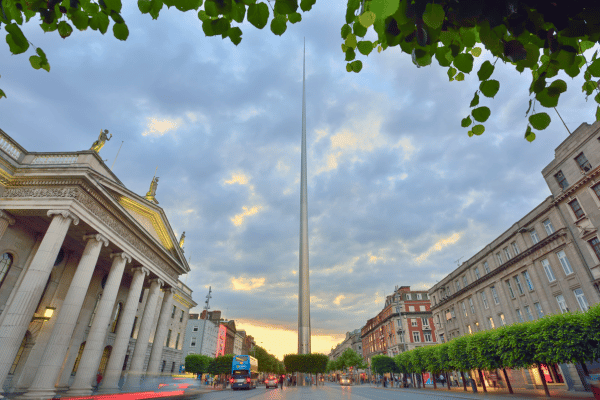
Dublin's main stage with 120m steel "Spike." Locals call it "Stiletto in the Ghetto." 1916 Easter Rising battlefield where rebels declared independence. Bullet holes still visible.
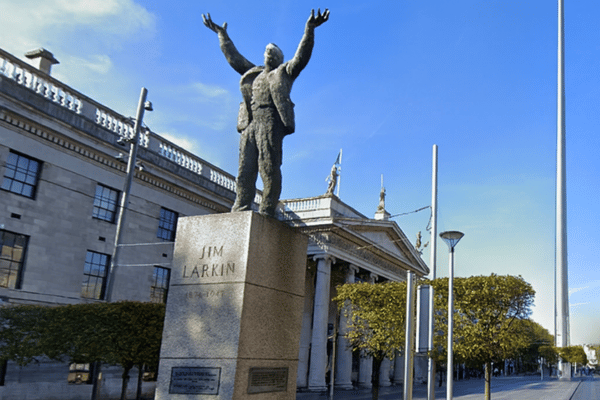
"Meet me under Clerys Clock" - Dublin's most romantic phrase. Big Jim Larkin's bronze figure with arms wide, leading 1913 labor movement. Romance meets revolution on O'Connell Street.

The Liberator's monument with 30 bronze figures and bullet-scarred angels. Europe's only bridge wider than it's long. Victorian crowdfunding met Irish engineering creativity.

World's first purpose-built parliament house, now Bank of Ireland. British forced destruction of Commons chamber but kept Lords. Hibernia statue watches over centuries of identity crisis.
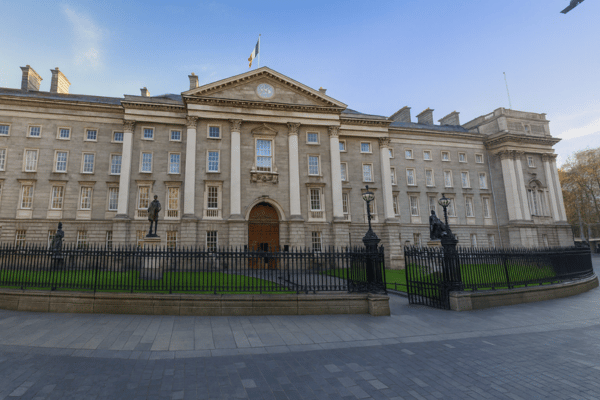
Ireland's oldest university with superstitious Campanile bell tower. Home to Book of Kells - "made by angels, not men." Protestant plot became nationalist breeding ground ironically.
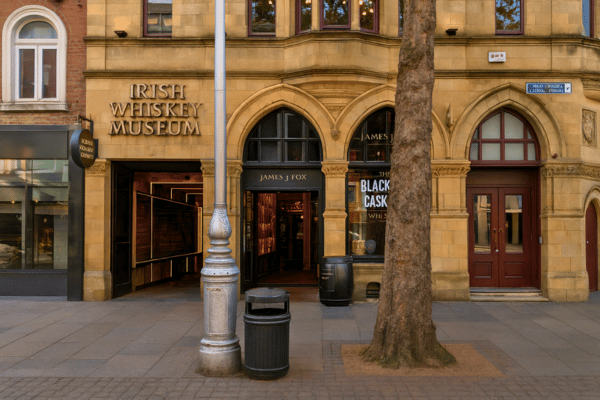
"Water of life" education in Edwardian building. Independent museum tells real whiskey story without brand bias. Triumphs, disasters, and spectacular comeback of Irish liquid poetry.
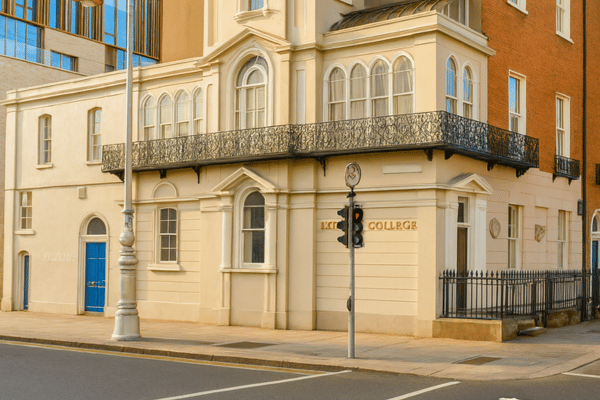
Oscar's childhood blue door and reclining statue in jade jacket. Wit sharpened at dinner parties with revolutionary poets. "Either the wallpaper goes, or I do" - even death couldn't stop him.
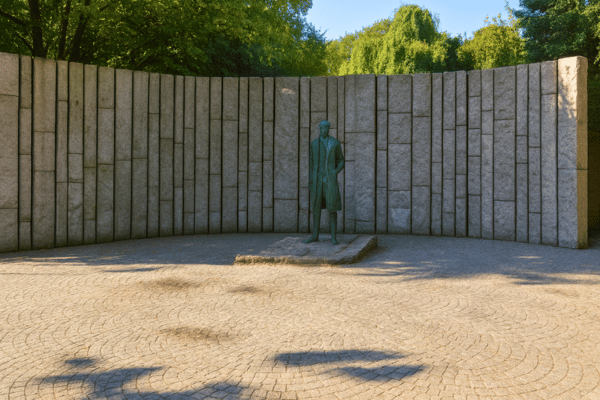
Father of Irish republicanism in amphitheater-like memorial. Protestant lawyer who united Catholic, Protestant, Dissenter. 1798 Rebellion failed but vision lived on through centuries.

22-acre democratic playground gifted by Guinness family. Former private park with bullet-scarred Fusiliers' Arch. 1916 rebels learned tall buildings overlook parks the hard way.
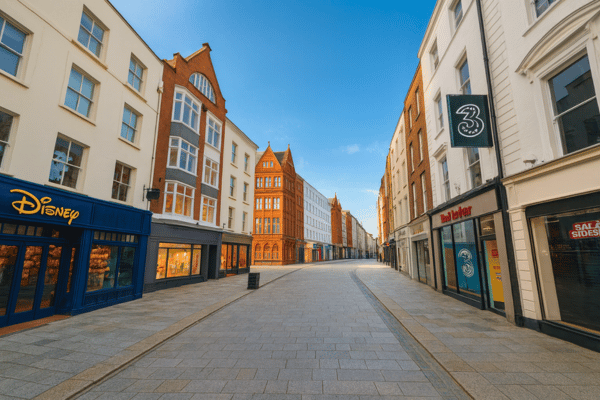
Car-free catwalk from muddy lane to busker's paradise. Glen Hansard and Damien Rice played here before fame. Pure Dublin theatre with shopping, coffee, and spontaneous performances.

"The Tart with the Cart" - Dublin's beloved fictional fishmonger in bronze. "Alive, alive oh!" Still selling cockles and mussels outside converted church-turned-tourist office.

Financial heart of Georgian Dublin. Named after medieval dam on River Poddle. From merchant powerhouse to modern banking, lined with Olympia Theatre and elegant Georgian facades.
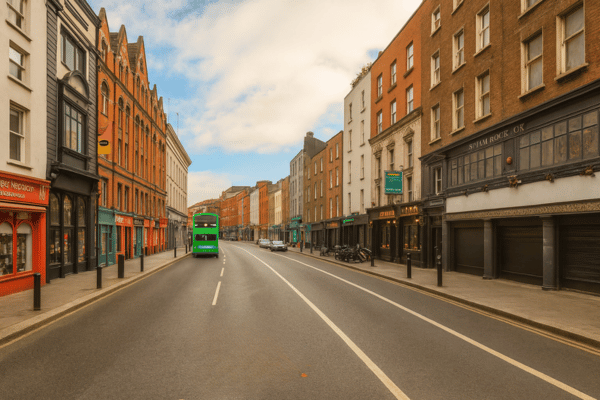
Birthplace of Irish republicanism in 1791. United Irishmen founded at Eagle Tavern over drinks. Simple idea: unite all Irish regardless of religion. Revolutionary thinking in modest lane.
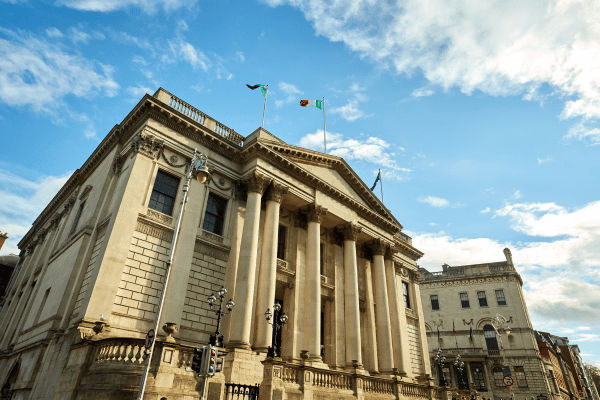
Former Royal Exchange turned rebel garrison in 1916. Merchant palace to democratic seat with stunning rotunda. Gandon's architecture survived merchants, rebels, and city council meetings.
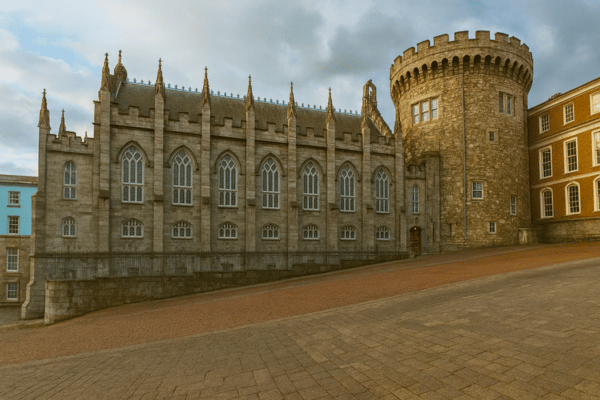
700 years of British rule ended here in 1922. Medieval tower meets Georgian palace. State apartments host presidents where viceroys once plotted. From fortress to ceremony center.
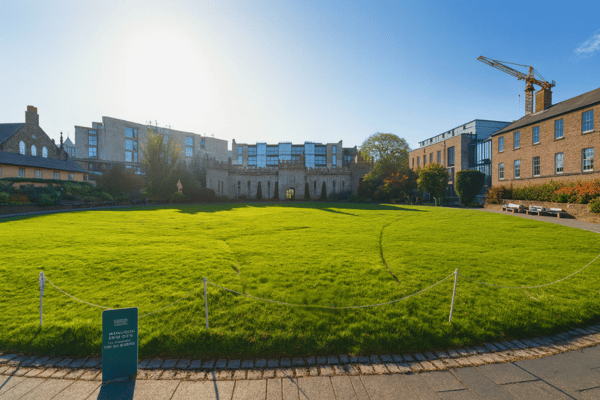
Where Dublin began - the original black pool. Vikings moored dragon ships here in 841 AD. Celtic knotwork in grass honors Norse artistry. River Poddle still flows underneath secretly.
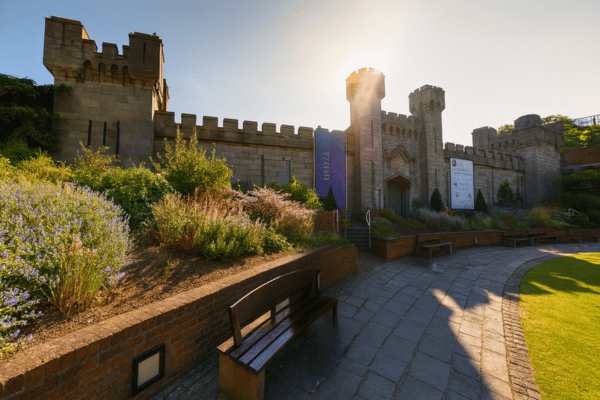
Viceroy's horse garage turned art gallery. Built 1833 with Gothic battlements for imperial transport. During Famine, coordinated relief while horses lived in luxury. Now hosts textile art.
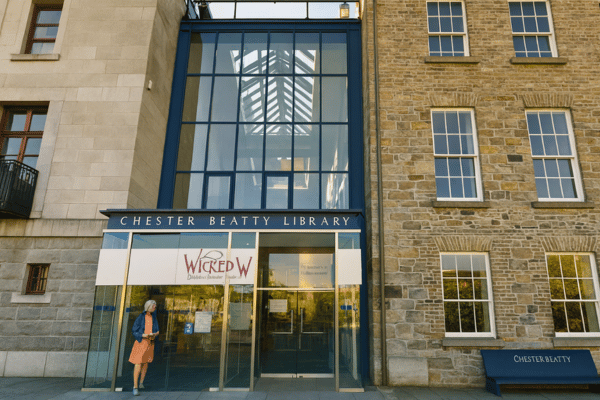
Mining magnate's 20,000 treasures spanning 6,000 years. 9th-century Qur'ans meet Chinese jade books. "Best museum in Europe" housed in Georgian clock tower building. Free entry.

Walk Ship Street Little, where cobbles echo soldiers and servants, castle walls face modern flats, and Dublin’s layers medieval, Georgian, Victorian—collide in one quiet street.
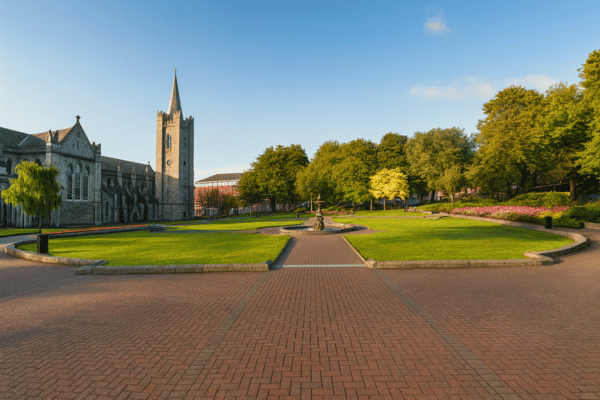
Saint's baptism site turned slum turned literary paradise. Guinness money created 1904 park with writer tributes. Swift to Beckett lined up like intellectual bus queue. Sacred to sublime.
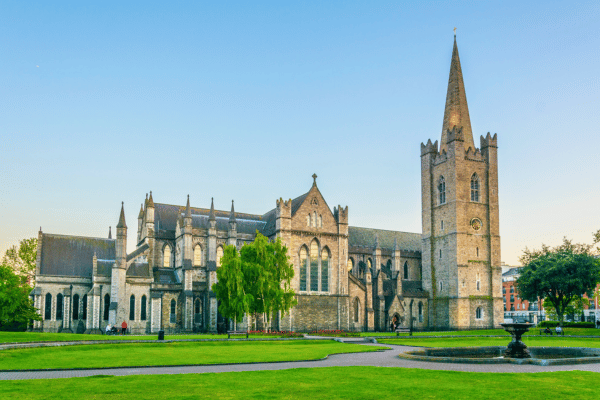
Ireland's largest church where Swift wrote sharp epitaphs. "Chancing his arm" door hole story of feuding families. Cromwell's horse stable turned Gothic masterpiece via Guinness restoration.
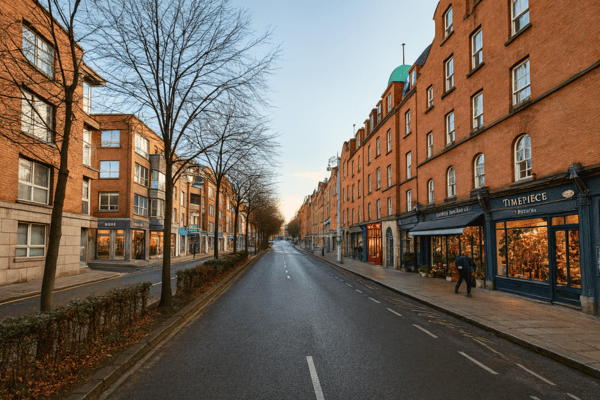
Whiskey, the ‘water of life,’ and Guinness, born of a 9,000-year lease, define Dublin’s spirit. From distillery rivalries to the Guinness Storehouse, liquid history flows through the city.
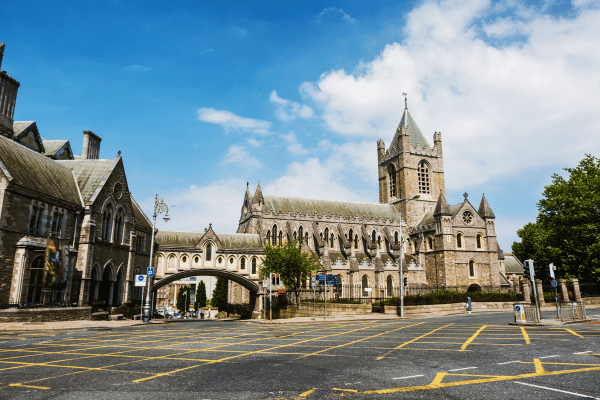
Viking church rebuilt by Normans. Mummified Tom & Jerry cat and rat in crypt. Stolen saint's heart mysteriously returned after 6 years. Medieval mystery meets tourist attraction.

Ireland's first purpose-built playhouse since 1662. Galleries collapsed twice on reclaimed river ground. Whiskey warehouse to Catholic church to theatre - ultimate Dublin survivor story.

Cultural quarter named after Temple family, not drinking. Medieval street grid survived 1970s bus station threat. Touristy but essential - over 700 venues in cobblestone chaos.

Fire-engine red pub that defines the district. Founded 1840, nearly demolished for development. Most photographed pub in Ireland with most expensive pint. Tourist rite of passage.

Red wall celebrating Ireland's rock legends. U2 to Thin Lizzy portraits in windows. Inside: Rock 'n' Roll Museum with rehearsal studio. From school gym beginnings to stadium gods.

Dublin's oldest pedestrian crossing since 1816. Elegant white cast iron replaced unreliable ferries. Half-penny toll until 1919. Links north and south Dublin across "stampeding" River Liffey.
Leave a review